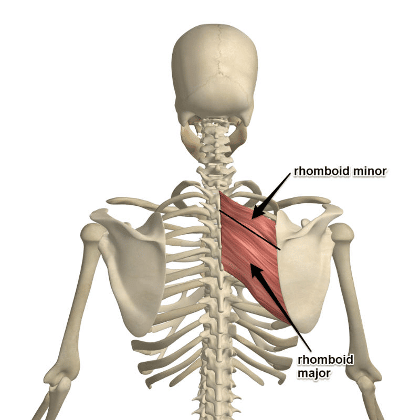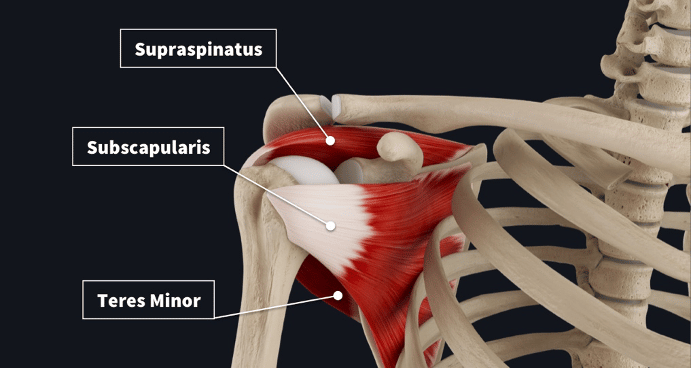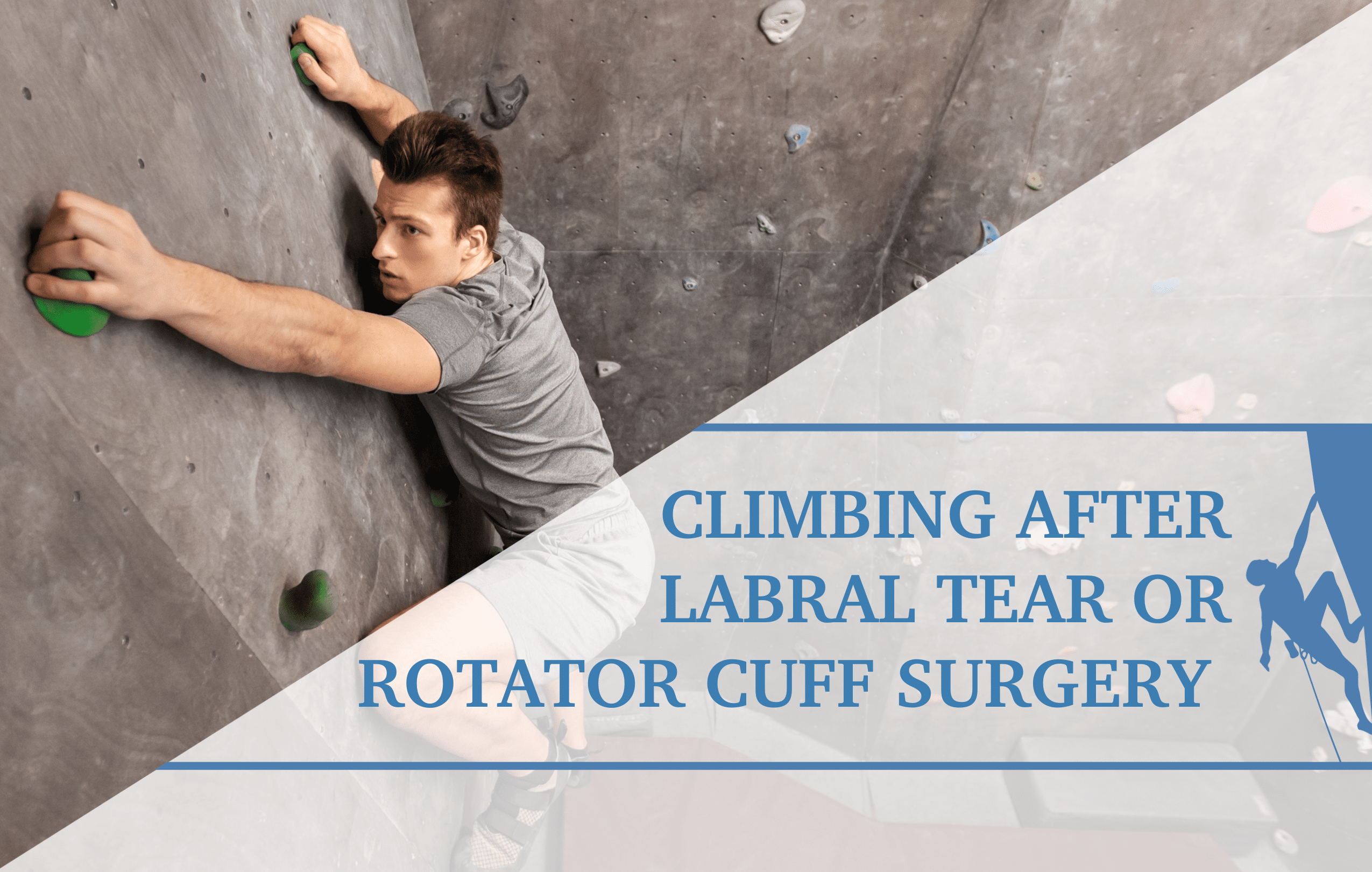The Importance of Scapular Strength in Climbers
As climbers, many of us have experienced nagging pains or ongoing injuries, likely from the over-stoke that climbing tends to manifest. Maybe you recently discovered climbing and are diving headfirst into the sport, working your way up through the grades, daydreaming about the climb you couldn’t quite get to the top of during your last session. You might suddenly feel a sharp pain in your elbow, or in the front of your shoulder the next day when you are trying to put on your jacket. Maybe, you are a seasoned climber who has been doing this for years, and have gone through cycles of shoulder pain or tennis elbow, you have sought occasional help from a PCP or PT when things have gotten really bad, taken a few weeks off, and gotten back on the wall. As climbers we tend to push the limits of what our bodies are capable of, and not uncommonly we will suffer the consequences when we increase volume too quickly, or go for a move that is a bit too big for our shoulders to handle.
Unfortunately, climbing injuries are all too common. One study found that out of 397 climbers surveyed, 90% reported having an upper extremity injury1. Another study found that 52% of injuries in climbers occur in the fingers, 17% in the shoulders, and 13% in the hand/wrist2. So the question is – how do we prevent these lingering injuries so that our climbing is not interrupted? The answer – we emphasize activating and strengthening the muscles around the shoulder blade! All too often climbers focus solely on hangboarding to improve finger strength while neglecting the foundation. Overall strength and stability of the arm begins at your shoulder blade, or scapula. If the muscles surrounding your scapula are not strong enough to help stabilize, excess work is required from muscles down the arm, leading to more stress at the elbow, wrist, and fingers.
The scapula is the foundation of the upper extremity. It acts as an anchor for the arm, originating from the back of the rib cage. What is unique about the union between the shoulder blade and the rib cage is that it is actually considered a“pseudo joint” meaning it stays in place due to different muscle attachments but does not have any ligaments or joint capsule connecting it as other joints in the body do. The scapula also connects to the collar bone and to the arm via more typical joint connections, making it a structurally unstable base for which the shoulder, elbow, and wrist movements originate from.

Let’s take a step back and compare the scapula-arm relationship to a raft. Consider a raft being navigated by a strong, experienced raft guide with top-of-the-line, carbon fiber paddles. But then you see that the raft is made of weak material with a couple of holes causing persistent leaking into the raft. In this scenario, it does not matter how much force the raft guide and paddle are generating, you are not going to get very far in a sinking raft. Now imagine your shoulder blade as the raft, and your fingers as the paddles. If the fingers are strong, but the foundation is weak, you will not be able to generate as much force. The foundation is important, and it should not be overlooked when training for climbing.

There are a few key muscles to consider when talking about scapular stabilization. The serratus anterior attaches the shoulder blade to the ribs. Its main action is protraction, which is the movement you make when punching or reaching for the next climbing hold. The serratus anterior is important to anchor the scapula down to allow the many other muscles that originate here to have a strong base to act off of.

The rhomboid muscles attach from the spine to the medial border of the shoulder blade. They assist the serratus anterior to anchor the shoulder blade to the ribs, and act to retract, or pinch the shoulder blades together. The middle and lower trapezius also helps to stabilize the scapula. The middle fibers help to retract the scapula, and the lower fibers depress and upwardly rotate the scapula which is important to execute overhead reaching movements essential in the sport of climbing.

The rotator cuff muscles work to not only rotate the arm but also stabilize the shoulder joint. The 4 muscles which compromise the rotator cuff act to stabilize the ball of the shoulder joint into the socket during dynamic movements.

Additionally, it has been found that gripping tasks activate muscles in the rotator cuff.3 From this we can conclude that the sport of climbing places a high demand on the rotator cuff, and weakness in these muscles commonly leads to injury including shoulder impingement, an injury that typically requires multiple weeks of rest from climbing.
To hammer home the importance of scapular strength and its effect on rock climbing, let’s take a quick look at some research. Many studies have looked into the influence of scapular strength and activation on grip strength. One study found that active scapular protraction (punching forward) increased strength of the flexor carpi radialis by 61%, flexor carpi ulnaris by 42%, and palmaris longus by 110%4. These three muscles all originate at the elbow and attach in the wrist, and act as wrist flexors – all of which are essential for maintaining a strong grip while climbing. A different study found that as muscle activation of the serratus anterior and lower trapezius increased, power produced at the hand also increased.5 What this means for climbers is that learning how to activate and strengthen your scapular muscles can translate to improved power and strength in your wrists and fingers!

The Routine
Without scapular stability, it is unlikely that maximum grip strength will be produced. Having a stable shoulder blade as the base for all upper extremity musculature enables more powerful activation of muscles in the elbow, wrist, and hand and allows force from larger muscles near the trunk to be more readily transmitted.6 So now that you are convinced that including scapular muscle strengthening in your climbing training is essential, let’s go over some basic strengthening exercises that can be incorporated into your warm-up routine or your next strength training session. Most of the exercises below target a combination of muscles described above. Ideally you will start with the more basic exercises in order to make sure you are activating the correct muscles without compensation, and then you will work through some of the more advanced exercises. Of course, please consult with a physical therapist for a more personalized program and to help manage any injury you may be dealing with.
About the Author

Annie is a physical therapist based in Golden, CO at Next Level Sports Performance and Physical Therapy. She received her Doctor of Physical Therapy degree from the University of Colorado in 2019. Annie has been an avid rock climber since 2013, and her love for climbing is what inspired her to pursue a career in physical therapy. She is excited about helping climbers and other athletes prevent injury and continue to participate in the sports that they love.
Email: annie@nextlevelsppt.com
Instagram: @annie.smevitt
References
- Nelson CE, Rayan GM, Judd DI, Ding K, Stoner JA. Survey of Hand and Upper Extremity Injuries Among Rock Climbers. Hand (N Y). 2017;12(4):389-394. doi:10.1177/1558944716679600
- Cole KP, Uhl RL, Rosenbaum AJ. Comprehensive Review of Rock Climbing Injuries. J Am Acad Orthop Surg. 2020;28(12):e501-e509. doi:10.5435/JAAOS-D-19-00575
- Alizadehkhaiyat O, Fisher AC, Kemp GJ, Vishwanathan K, Frostick SP. Shoulder muscle activation and fatigue during a controlled forceful hand grip task. Journal of Electromyography and Kinesiology. 2011;21(3):478-482. doi:10.1016/j.jelekin.2011.03.002
- Yang J, Lee J, Lee B, Jeon S, Han B, Han D. The Effects of Active Scapular Protraction on the Muscle Activation and Function of the Upper Extremity. J Phys Ther Sci. 2014;26(4):599-603. doi:10.1589/jpts.26.599
- Shim J, Park M, Lee S, Lee M, Kim H. The Effects of Shoulder Stabilization Exercise and Shoulder Isometric Resistance Exercise on Shoulder Stability and Hand Function. J Phys Ther Sci. 2010;22(3):227-232. doi:10.1589/jpts.22.227
- Horsley I, Herrington L, Hoyle R, Prescott E, Bellamy N. Do changes in hand grip strength correlate with shoulder rotator cuff function? Shoulder Elbow. 2016;8(2):124-129. doi:10.1177/1758573215626103
- Disclaimer – The content here is designed for information & education purposes only and the content is not intended for medical advice.




